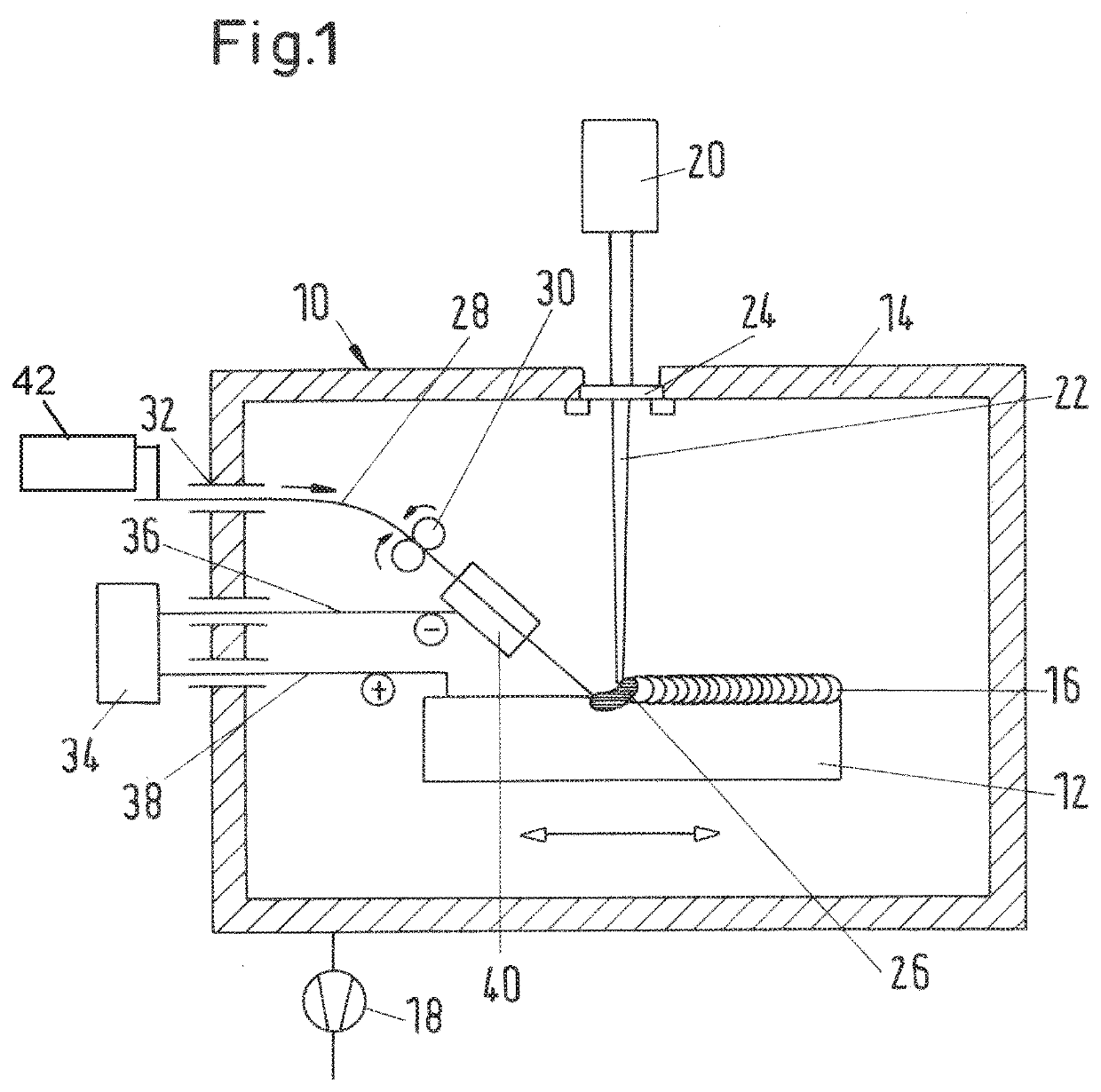Method for the additive manufacture of metallic components
a technology of metallic components and additive manufacturing, which is applied in the direction of additive manufacturing, manufacturing tools, process efficiency improvement, etc., can solve the problems of inability to produce, large time expenditure, and relatively large quantity of metallic materials in the form of powder, and achieve the effect of precise application on the workpi
- Summary
- Abstract
- Description
- Claims
- Application Information
AI Technical Summary
Benefits of technology
Problems solved by technology
Method used
Image
Examples
Embodiment Construction
[0025]FIG. 1 shows a device 10 with which a method for the additive manufacture of a metallic component 12 in a vacuum chamber 14 can be performed. The component 12, which in FIG. 1 is shown still as a workpiece in an intermediate stage, is mounted on a table (not shown in any more detail) which permits a movement of the component in the X, Y and Z directions. The component 12 is generated in layered fashion in the context of the additive manufacture, that is to say, in the exemplary embodiment shown in FIG. 1, a series of layers has already been applied, wherein the present applied material layer 16 has, for illustrative purposes, been illustrated on an exaggeratedly large scale. The first layer may be built up on a substrate that has been introduced into the chamber 14 beforehand.
[0026]A vacuum pump 18 evacuates the interior of the vacuum chamber 14 to the pressure values that are conventional in the field of thermal processing methods in a vacuum.
[0027]The introduction of energy ...
PUM
| Property | Measurement | Unit |
|---|---|---|
| Polarity | aaaaa | aaaaa |
| Current | aaaaa | aaaaa |
| Solidus temperature | aaaaa | aaaaa |
Abstract
Description
Claims
Application Information
 Login to View More
Login to View More - R&D
- Intellectual Property
- Life Sciences
- Materials
- Tech Scout
- Unparalleled Data Quality
- Higher Quality Content
- 60% Fewer Hallucinations
Browse by: Latest US Patents, China's latest patents, Technical Efficacy Thesaurus, Application Domain, Technology Topic, Popular Technical Reports.
© 2025 PatSnap. All rights reserved.Legal|Privacy policy|Modern Slavery Act Transparency Statement|Sitemap|About US| Contact US: help@patsnap.com


